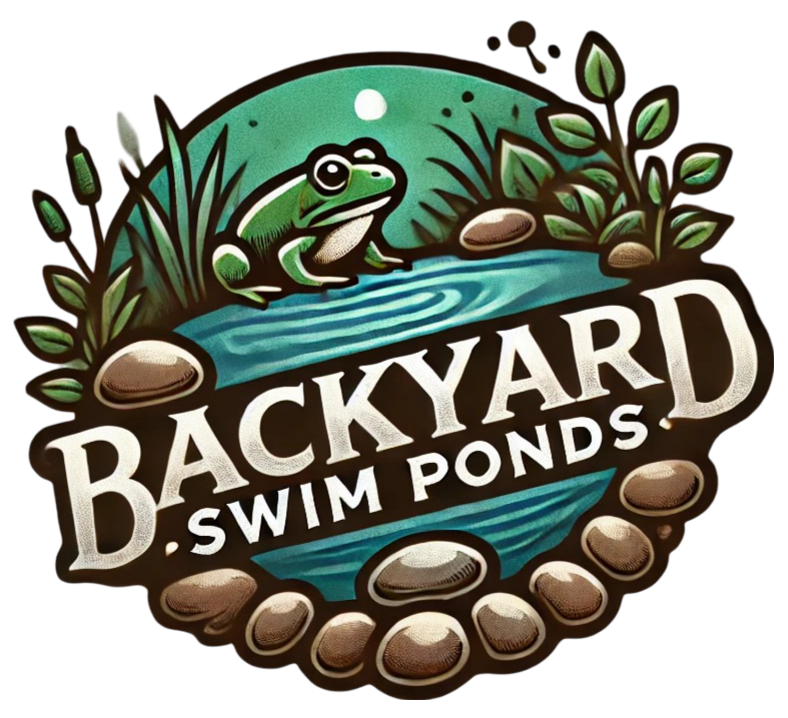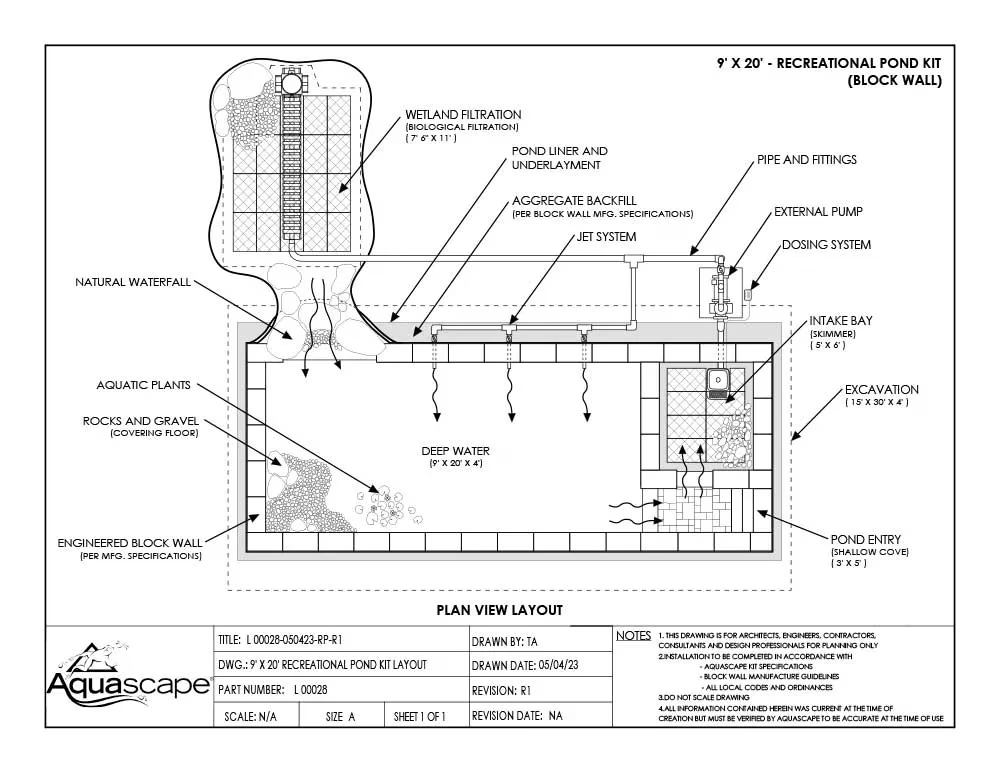Creating a compact swim pond offers a unique opportunity for homeowners to enhance small garden spaces, providing both a functional leisure area and ecological benefits. These ponds, typically ranging from 100 to 500 square feet, can serve multiple purposes such as swimming, relaxation, and wildlife habitat.
To design an effective swim pond, it is critical to understand the importance of depth ratios. By incorporating various depth zones, homeowners can maximize usability while ensuring a visually appealing pond space. Awareness of the garden’s layout, particularly when sloped, is essential for maintaining stability and flow. Compact swim ponds not only enhance the aesthetic appeal of a garden but also incorporate natural elements that contribute to a balanced ecological environment.
This guide aims to provide an in-depth exploration of strategic depth design for compact swim ponds. By addressing practical design strategies, safety considerations, and ecological benefits, homeowners can create a serene retreat that promotes swimming enjoyment while positively impacting their environment.
Diagram illustrating dimensions and layout of a recreational pond kit for compact garden spaces (Source: Aquascape)
Unlocking Depth Strategies for Layered Design
Designing a compact swim pond requires careful planning of depth strategies to enhance functionality. Mixed depth zones should be integrated to create a versatile swimming environment. Recommended distributions include shallow areas (15-30 cm or 6-12 inches), medium-depth areas (45-60 cm or 18-24 inches), and deeper sections (60-90 cm or 24-36 inches).
Maintaining a depth ratio where at least 40% of the pond reaches the maximum depth is critical for effective swimming capability. This proportion allows swimmers to enjoy deeper sections while accommodating plant life that nurtures aquatic ecosystems. For gardens featuring slopes, reinforcing the pond’s structure through retaining walls and proper soil management is vital to ensure stability.
Safety is another key consideration when designing swim ponds. Transition slopes from shallow to deep areas should not exceed a 1:7 incline, ensuring a gradual descent that maintains safety for users entering the pond. By implementing these layered strategies, homeowners can create swim ponds that are not only functional but also visually attractive, encouraging users to engage with the water.
Diagram showing different pond depth strategies and design layouts (Source: FAO Training)
Benefits of Graduated Depths Beyond Aesthetics
Incorporating varied depths in a compact swim pond brings numerous ecological and practical advantages. Graduated depths foster diverse habitats, promoting biodiversity by allowing different aquatic species to thrive. Shallow zones cater to plant life and smaller fish, while deeper areas support larger fish and aquatic organisms that prefer greater depths.
These graduated depths also enhance water quality. Zones populated with plants act as natural filtration systems, helping to clean the water and reduce the need for chemical treatments. Consequently, users can enjoy a clear pond while providing habitats that support various aquatic lifeforms. Natural ponds are shown to support 50% more species than conventional swimming pools, thereby enhancing overall ecosystem health.
Moreover, clearly defined zones for swimming and relaxation enhance both user enjoyment and safety. Marking swim zones establishes navigation clarity, allowing users to appreciate the multifunctionality of the pond. Evidence suggests that natural ponds contribute significantly to promoting ecosystem diversity, further enhancing their value.
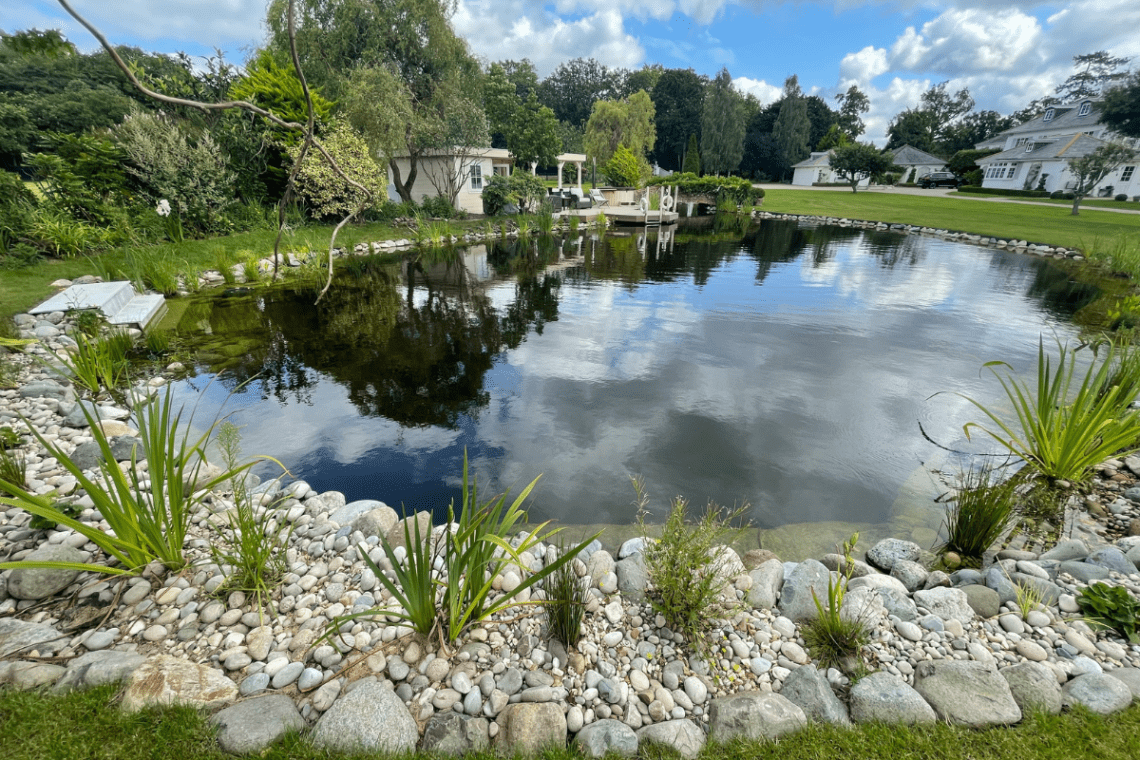
Infographic comparing biodiversity benefits of natural swimming ponds to traditional swimming pools (Source: Pond and Garden Design)
Plant Choices for Shallow Filtration Zones
Selecting appropriate aquatic plants for shallow filtration zones is essential for maintaining the health and functionality of a compact swim pond. Suitable plant choices include Water Celery, Pickerelweed, and Soft Rush. These plants not only enhance water quality through nutrient absorption but also contribute to the aesthetic appeal of the pond.
Understanding the maintenance requirements for each plant is vital to ensure their health. Most aquatic plants benefit from regular pruning and monitoring to support growth, particularly during peak growing seasons. Recommended planting strategies often suggest a balanced ratio of 50% planted areas to 50% swimming space, ensuring effective filtration capabilities combined with visual appeal.
Specific aquatic plant species beneficial for shallow zones include:
- Water Celery (Oenanthe javanica): Effective for nutrient absorption and water purification in shallow waters.
- Pickerelweed (Pontederia cordata): Thrives in depths of 6-12 inches and helps control erosion.
- Soft Rush (Juncus effusus): Offers strong cleaning properties without attracting pests.
- Water Iris (Iris pseudacorus): Highly effective at nutrient removal, suitable for wet margins.
Integrating these plants fosters both functional and ecological benefits in the swim pond, contributing to its overall viability as a sustainable water system.
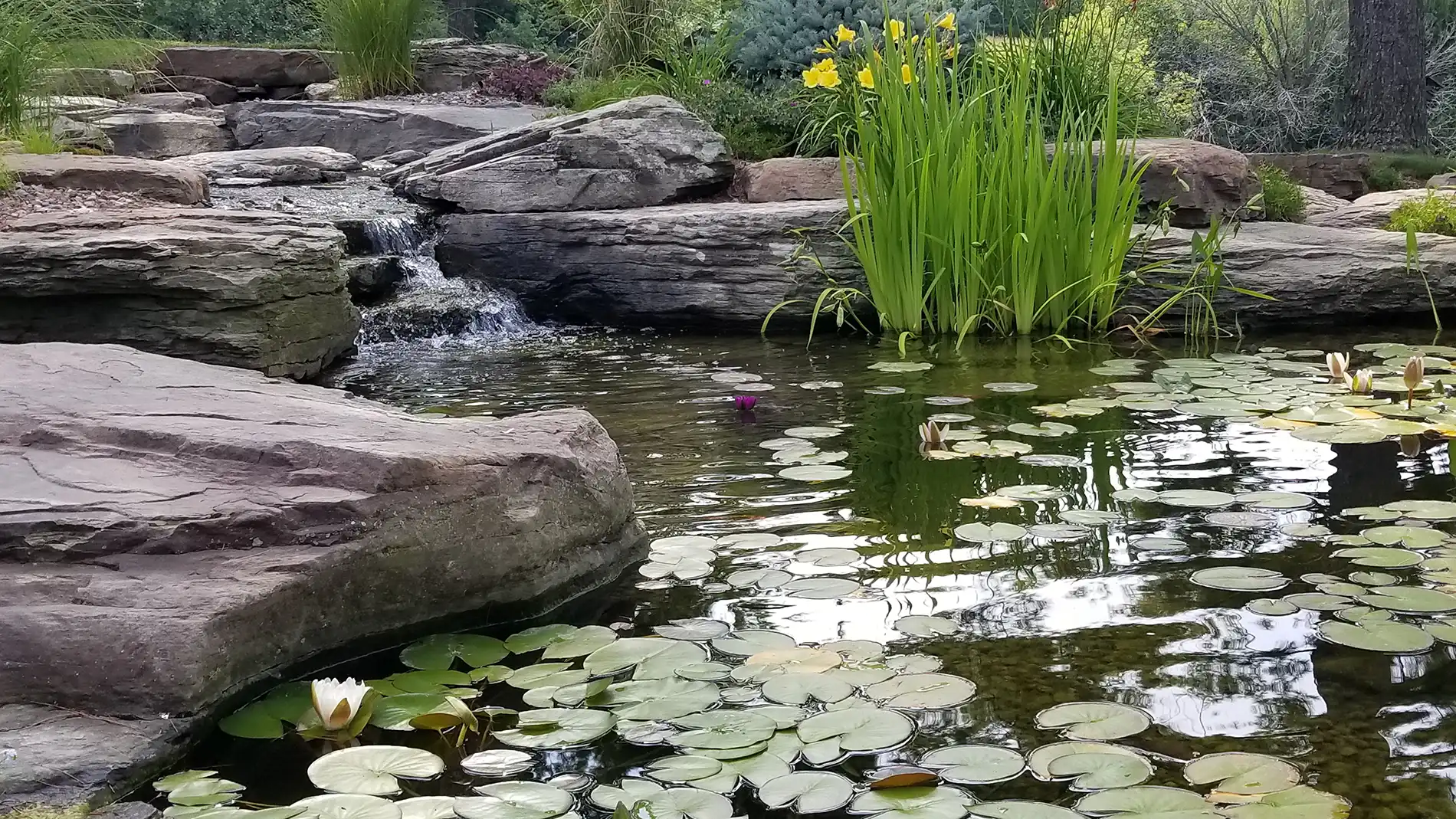
A photo displaying various low-maintenance aquatic plants suitable for pond settings (Source: Reflections Water Gardens)
Safety First Implementing Best Practices in Design
Safety measures are paramount when designing a compact swim pond. Various regulations must be adhered to in order to ensure a safe environment for swimming, especially concerning depth transitions and slope angles. It is advisable to have depth markings that are at least 4 inches tall and carefully indicate underwater depths at intervals of 6 inches.
Safety features should also include handrails near transition areas and reinforced pathways leading to the water. Clear signage indicating safe swimming areas is essential, helping users navigate depth changes within the pond. For gardens that are sloped, it is crucial to avoid steep transitions. Ideally, slope transitions should not exceed a 1:7 incline from shallow to deeper sections, maintaining a safe gradient for users.
Regular maintenance and supervision play critical roles in upholding safety standards. Conducting inspections of the pond structure and ensuring a visible perimeter can significantly contribute to maintaining a safe water environment. Implementing strong, clearly defined safety measures allows for an enjoyable swimming experience while minimizing risks.
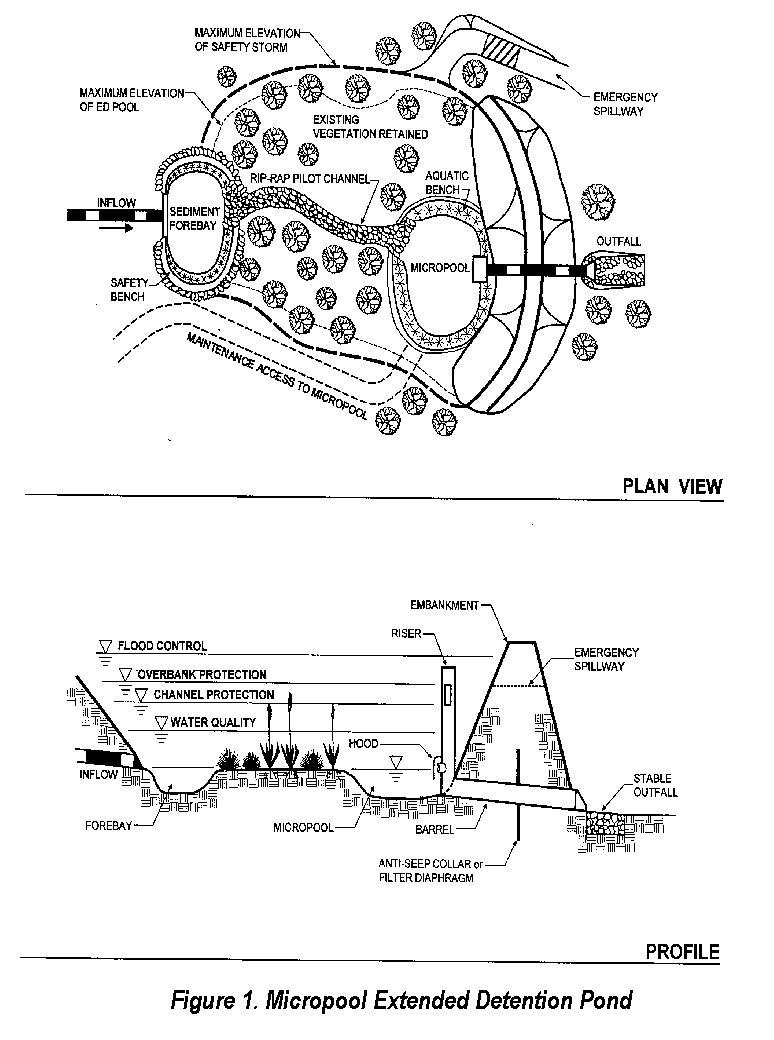
Diagram illustrating the safety measures and depth markings in pond designs (Source: Stormwater Center)
Creative Solutions for Limited Space Enhancing Your Swim Pond
Maximizing functionality and aesthetic appeal in ponds smaller than 200 square feet requires innovative design techniques. Multi-level designs can significantly improve usability, allowing for tailored areas suitable for lounging, swimming, and diving. Creating a shallow entry area (approximately 2-3 feet deep) serves well for relaxation, while deeper sections (4-5 feet) accommodate swimming.
Incorporating built-in seating into the design, such as underwater benches, helps enhance usability while conserving valuable space. Vertical gardens surrounding the pond can also maximize surface area and provide visual interest. Emerging technologies, such as adjustable or movable floors, allow for varying depths within compact footprints, accommodating a wider range of recreational needs.
Strategic lighting adds another layer to the design. Color-changing LED lighting enhances the ambiance, transforming the pond into a more inviting space during nighttime. By utilizing natural materials and incorporating features like waterfalls, homeowners can create a character-rich pond that remains functional and attractive.

An image of a compact swim pond showcasing an integrated design useful for small areas (Source: Premiere Aquascapes)
Sustainable and Environmental Benefits of Swim Ponds
Choosing a natural swim pond presents numerous environmental benefits in comparison to traditional pools. A primary advantage lies in the enhancement of biodiversity. Natural ponds contribute to the creation of habitats for various flora and fauna, promoting local ecosystems. Studies indicate that these ponds can support significantly more species than conventional swimming pools, ultimately improving surrounding environments.
Furthermore, natural swim ponds eliminate the need for harmful chemicals such as chlorine. This chemical-free approach not only protects surrounding ecosystems from chemical runoff but also promotes clearer water, which is healthier for both aquatic life and humans. Additionally, these ponds can play a vital role in stormwater management, helping to mitigate flooding risks and provide cleaner water in nearby drainage systems.
Natural swim ponds typically require less water than conventional pools due to reduced evaporation. This, combined with every opportunity to recycle rainwater, bolsters sustainability. Overall, these ponds offer not only recreational opportunities for homeowners but also broader environmental advantages.
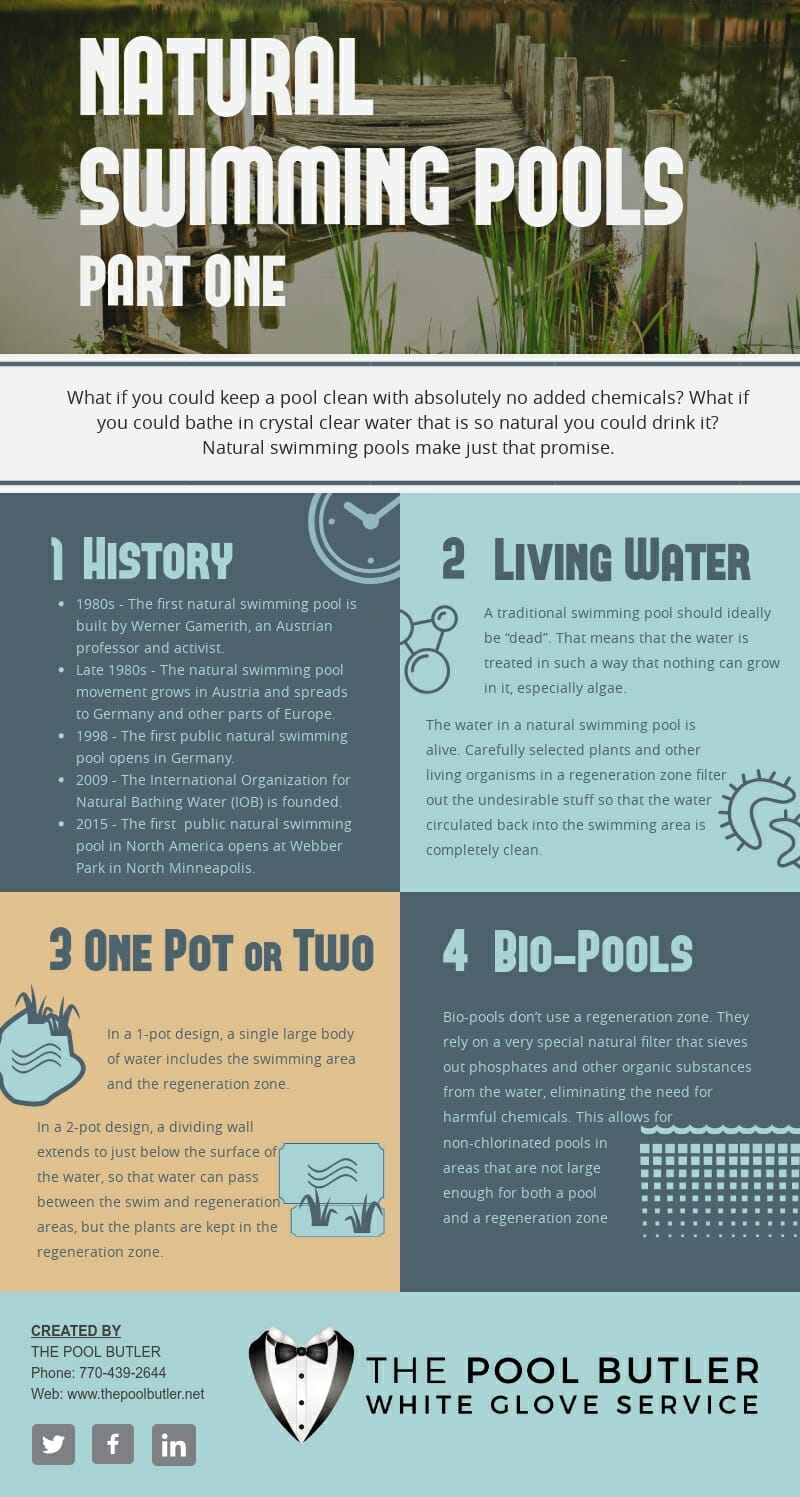
Infographic illustrating the environmental benefits of natural swimming pools versus traditional pools (Source: The Pool Butler)
Conclusion
The strategic depth design of compact swim ponds can enhance small garden spaces, creating inviting retreats that balance recreational and environmental benefits. By implementing layered depth designs, selecting appropriate aquatic plants, and adhering to safety measures, homeowners can develop enriching pond environments that cater to a variety of activities.
Innovative solutions in compact designs not only optimize usability but also promote ecological sustainability. The prioritization of environmentally friendly practices encourages biodiversity while minimizing reliance on chemical treatments. With careful consideration and planning, a compact swim pond can thrive as a vibrant addition to any home garden, offering a tranquil and enjoyable space that fosters a connection with nature.
By following the guidance presented in this article, homeowners with limited space can confidently design and maintain their ideal compact swim pond, cultivating a personal oasis that resonates with natural beauty and ecological harmony.
